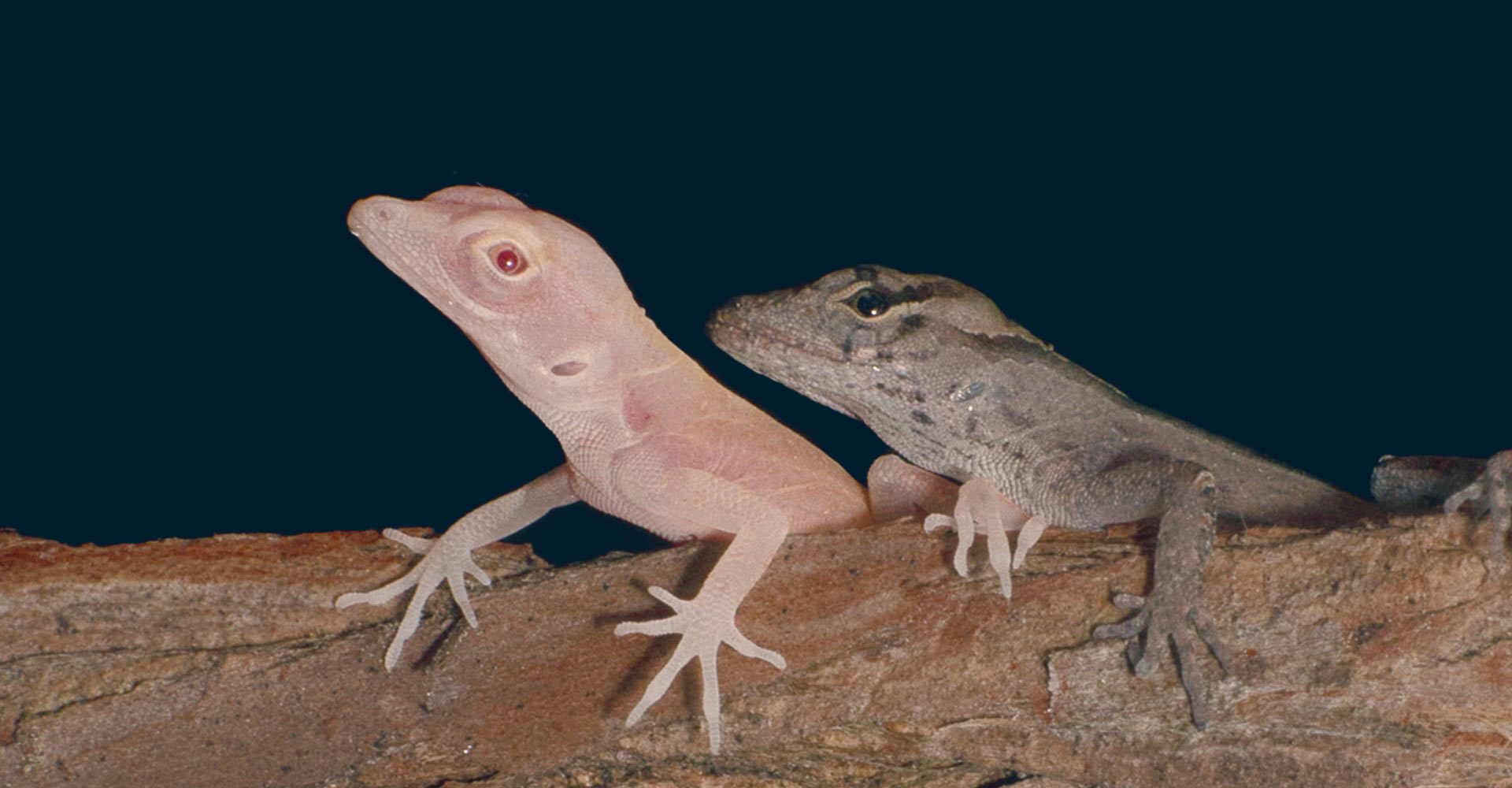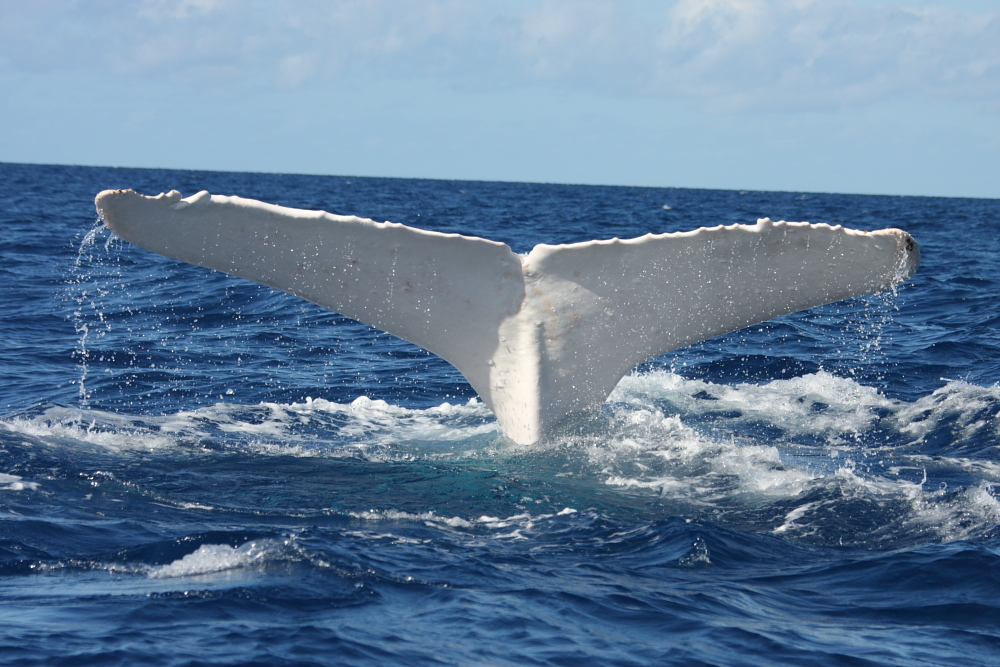
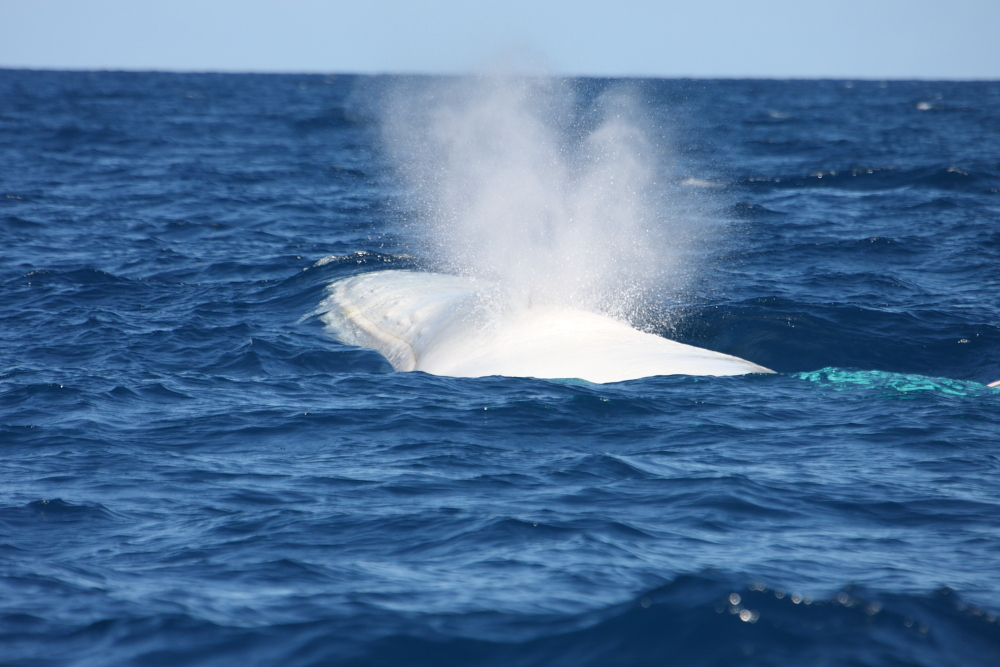
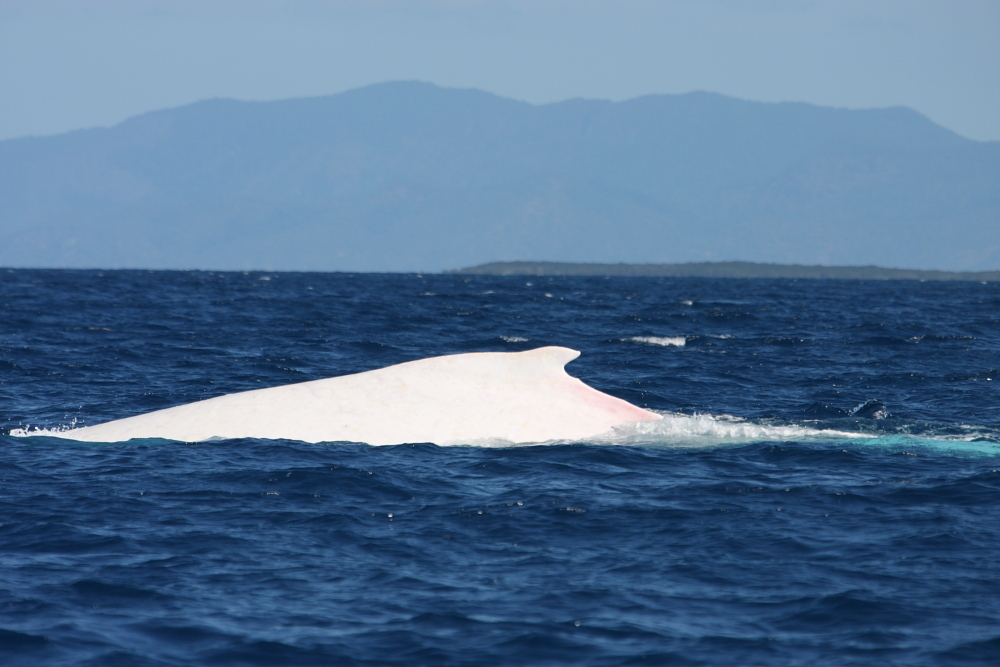
It’s important to note that not all white animals are albino. Some animals are simply light-skinned, or they might suffer from other conditions, such as leucism and isabellinism. To tell the difference between an albino animal and one without the disease, look at the eyes: blood vessels normally masked by pigment show through in albino creatures, making their eyes pinkish in color.
Albino wildlife may face obstacles in nature. They often have poor eyesight, which puts them at a disadvantage when hunting for food and avoiding danger. In some cases they have trouble finding a mate, and their inability to camouflage themselves makes them vulnerable to predators. Take albino alligators, for instance, who make such an obvious target for predators that they’re often eaten before they reach adulthood.
Albino animals and other unusually pale wildlife are also more vulnerable to poachers looking to capitalize on booming demand for exotic pets or products derived from rare creatures. The threat to these animals is so real that a nonprofit bought an island off Indonesia just so that it could build a sanctuary there for an albino orangutan, who will be protected by security guards nonstop when she moves there in June 2019. Many albino animals are also sent to zoos for protection. One of the most well-known albino zoo animals was Snowflake, a gorilla featured in National Geographic magazine who died from skin cancer in 2003.
Beginning in utero, certain genetic mutations prevent the production of melanin, the pigment responsible for the development of skin, fur, and eye color. Because these animals don't have any melanin, they can have an all-white appearance, often with pinkish or very pale blue eyes. Every animal makes melanin—from mice, to orang-utan, to human beings—so, accordingly, any animal can have albinism.
Albino whales have been spotted off the coasts of Australia and Norway, but travel incredibly long distances in search of nutritious plankton. Depending on the health of the plankton they're consuming, these whales can appear to have a yellowish tinge to their skin. But when they return to their home waters—and nom on their regular plankton—their skin looks totally white again.
Considered to be the most famous humpback whale in the world, Migaloo may be the only pure white adult humpback whale alive today. This remarkable whale was first spotted in 1991 off Byron Bay, Queensland by a group of volunteers conducting a whale count. The first photograph of Migaloo was taken through a telescope from a distance of over 5 km away. It was blurry and unclear if he was all white. In 1993 Pacific Whale Foundation researchers encountered this amazing white whale in Hervey Bay, Queensland. During this encounter we were able confirm the whale was all white and in 1998, we recorded the whale singing, a trait distinct to male humpback whales. Genetic testing in 2004 by Southern Cross University scientists further confirmed that Migaloo is a male; this confirmed what we knew because Migaloo has been recorded singing and only male humpback whales produce song.
Scientists were initially hesitant to state Migaloo has albinism because his eyes are brown, rather than the typical red or pink. In the past he has been called the more conservative terms “all-white”, or “hypo- pigmented”. However, a 2011 study of his DNA by researchers at the Australian Marine Mammal Centre found a genetic variation leading to albinism; confirming that Migaloo is a true albino.



Snowflake was famous for being the only known albino gorilla in the world. A western lowland gorilla, he lived at the zoo until his death from skin cancer in 2003. He was born in the wild with albinism - a genetic mutation that caused him to lack colour pigments in his skin and hair - but was captured by villagers in Equatorial Guinea in 1966.
Snowflake inherited this mutation directly from his parents and when the researchers delved further into the DNA of his mother and father they discovered stretches of Snowflake's DNA from both parents were identical.They were able to determine that his mother and father shared 12 per cent of their DNA and concluded that this likely made them uncle and niece. Lack of skin pigmentation makes people and animals more susceptible to sunburn and skin cancers. Snowflake the albino gorilla died of skin cancer in 2003.
 |
No, not all white cats are considered albino! While white cats simply have a gene coded for white fur, albino cats have a total lack of color pigmentation in their skin, fur, and eyes. The simplest way to determine whether or not a cat is albino? Look at his eyes. White cats can have a range of eye colors—including blue, green, yellow, orange, or a combination of colors—while albino cats have eyes that look very pale blue, pink, or red. It's important to note that albino cats don't actually have pink or red eyes; the reflection of light against the eye's blood vessels just make it look that way. Like albino dogs, domesticated albino cats require special care: Many cats with albinism are also partially or totally deaf. If your cat has hearing issues, there are several safety precautions you must take to keep him safe: Try to use visual cues—rather than verbal cues—to avoid startling him and keep him indoors at all times, so he can't run into outdoor hazards or potential predators. Because their skin and fur lacks pigmentation, albino cats are extremely sensitive to sunlight. |

The unique orangutan quickly became an Internet sensation after the foundation called for suggestions to name her in May 2017. They settled on Alba — meaning "white" in Latin and "dawn" in Spanish.With striking blue eyes and white hair, Alba was rescued in 2017 by the Borneo Orangutan Survival Foundation — which calls her the only albino orangutan ever recorded.The symptoms of albinism — namely the lack of the pigment, melanin, in her hair and skin — can lead to health complications, such as, poor eyesight, poor hearing, and skin cancer, and make her more vulnerable to hunting or predation.

Albinistic birds typically have pink or reddish eyes, flesh-colored bill, legs, and skin. Some albino birds show some yellow or orange coloration on the bare parts of the face. Carotenoids and organic pigments that come from plants in the birds’ diets, may enter some feathers, giving albino birds slight coloration. Albino birds have an impaired vision and physiological problems, which in most cases, prevents them from reaching the adult age. Albino birds kept in captivity have more chances for a longer life than those exposed to the sun and other external elements in the wild. Due to the lack of pigmentation, the birds have weaker feathers and can’t fly well. They are also easier for predators to spot.
 |
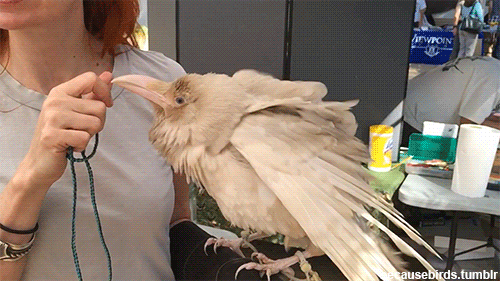 |
The rare albino raven was taken in as a fledgling by Madena Bennett after it was brought to the California Wildlife Center in Calabasas. The bird had learned to say phrases including “wow,” “oh my God” and “I love you.” Albino ravens are rare, Bennett said, the “stuff of legends” similar to Native American accounts of the elusive white buffalo or the white whale of Moby Dick fame. Seeing it was almost spiritual, she said.
Albinism effects all vertebrates in much the same way, so fishes are expected to have similar problems. However, there are some critical differences – melanin is the only pigment system in mammals, and so albino humans will appear white, but fishes can also have a range of other pigment cells including xanthophores, erythrophores, iridophores, leucophores and cyanophores, which are unaffected by albinism. For this reason, albino fishes can often look yellow, or have a yellow pattern due to the underlying xanthophores showing through.

He was in danger in the wilderness owing to albinism which did not allow him to camouflage into his surroundings like other alligators. There are only a couple of dozen known albino alligators in the world, all in captivity. Claude was taken to the California Academy of Sciences in 2008. Claude's toe was amputated after developing an infection from being bitten by another alligator (Bonnie). Claude appears completely white because he lacks the pigment melanin. This is due to destruction of pigment-forming cells known as melanocytes.
Only around one in 10,000 animals are born albino, but according to Col Limpus, chief scientist with Queensland’s Government’s Threatened Species Unit, Alby is much more rare. “Albino hatchlings are extremely rare; it probably occurs at the rate of one in many hundreds of thousands of eggs that are laid.” Pair that with the fact that only one in 1,000 sea turtles live to maturity — not to mention the fact that all albino animals have a harder time surviving in the wild — and it starts to make sense that there’s no record of an albino sea turtle living long enough to nest.


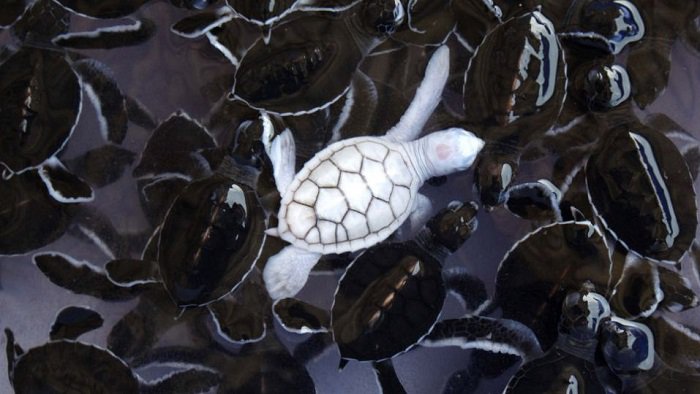
A team from the University of Georgia, U.S., reported successfully creating an albino lizard through gene-editing, a first for reptiles. The mutation introduced in the unfertilized eggs of female brown anole (Anolis sagrei) lizards led to the birth of albino offspring. In humans, albinism can cause eye problems. So the scientists hope the lizards could be used to study how the retina develops in this condition, and develop treatments.


